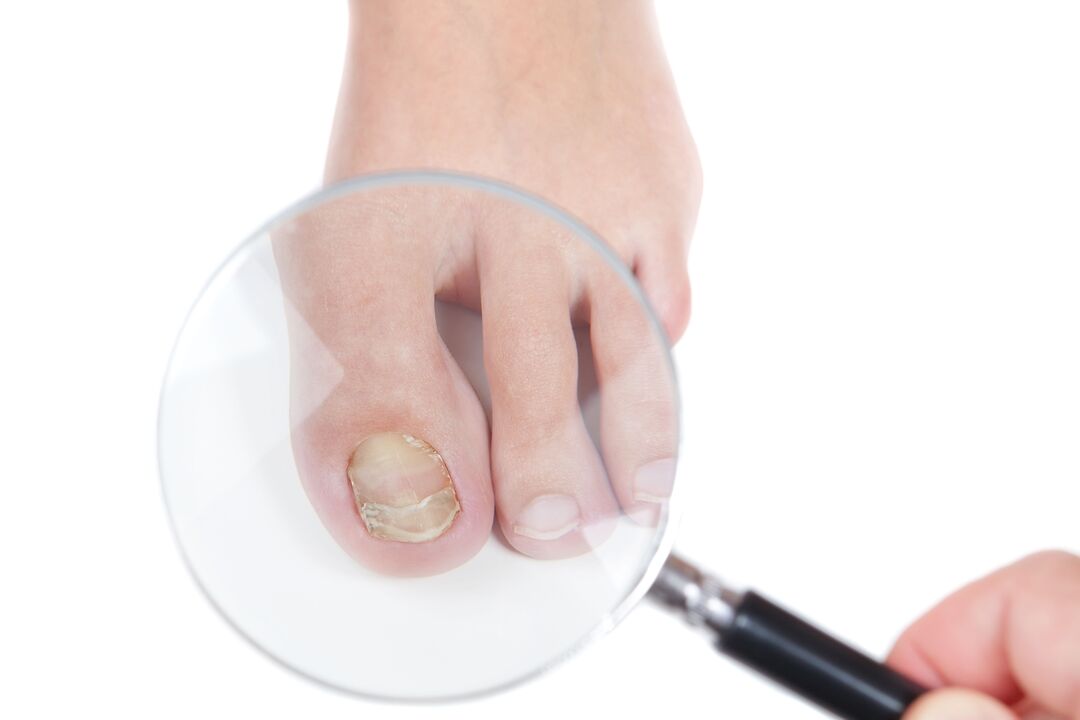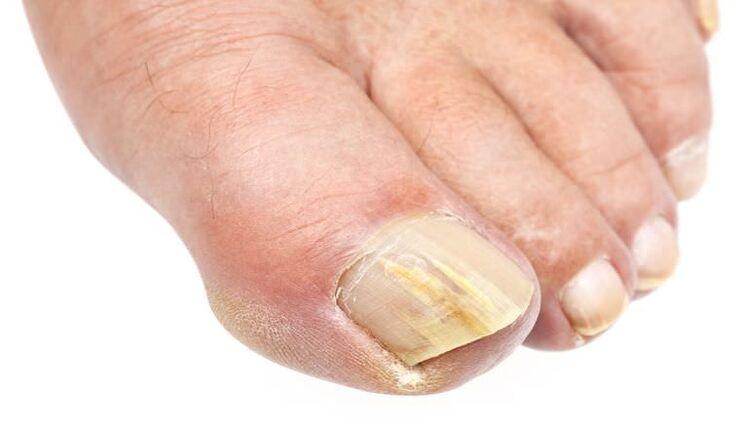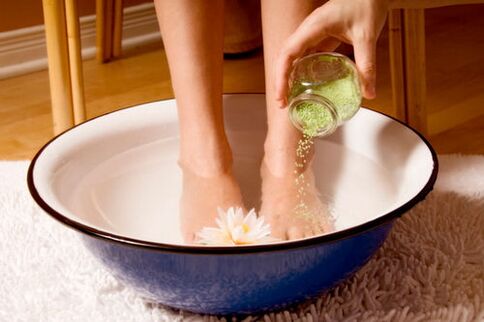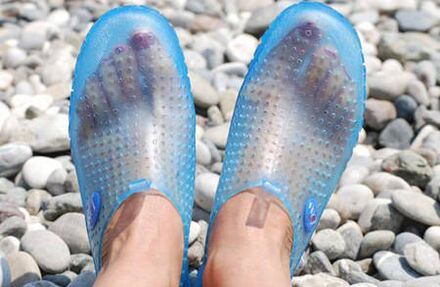Onychomycosis is a disease that is contagious but much more difficult to cure. It is not only a cosmetic problem, but also causes an unpleasant and painful sensation in a person. According to statistics, every inhabitant of the 10th planet suffers from it, and you may even be in a risk zone. What are the causes of this disease, the factors of development of onychomycosis and how to beat the fungus on toenails?
How does toenail fungus appear and why does it occur?
The disease is provoked by dermatophytes, yeasts and fungi. According to statistics, every 10th person on the planet is affected by this disease.

Where can You Get Toenail Fungus? The main risk areas are swimming pools, baths, saunas. You can be infected by using shoes, socks, or during other people’s pedicure procedures. Onychomycosis more often affects individuals with chronic conditions such as obesity, diabetes, anemia, gastrointestinal, hormonal, immune and cardiovascular disorders, and long -term steroid, antibacterial and chemotherapy treatments.
Warmth and moisture contribute to the expansion of spores. The main routes of infection are wounds, microcracks and other skin lesions in the finger area. Mycosis develops when the nail plate is damaged - if we cut it too long or break it, the fungus easily penetrates inside. Wearing tight shoes also weakens the fabric, as do acrylic nails, gels, and paints.
We make a diagnosis
The visual manifestations of the disease are already the second stage of the disease. The first evidence of infection - itching, burning, most often caused by excessive drying of the skin, bad soap, side effects from taking the drug. Timely diagnosis and initiation of treatment allows you to get rid of the problem quickly and effectively.
How to diagnose the disease itself
The main symptom is external changes, especially in the early stages of the development of the disease. The first signs usually appear on the free edge (front) of the nail plate or on the side. At the onset of onychomycosis, it can be an unpleasant sensation while doing physical activity. Patients described paresthesia (numbness), pain, discomfort, and loss of fitness. Common external changes include the following symptoms:
- discoloration - white, yellow, brown, greenish, gray spots appear on the tips of the nails;
- exfoliation and melting of the fabric, its fragility is clearly enhanced;
- thickening of the stratum corneum, characteristic symptoms of excessive keratosis;
- Unpleasant foot odor.

Fungal infections are more common on the feet than on the hands. They can be limited to one finger or cover all fingers. However, usually the disease affects the first and fifth toes, due to the nearby shoes.
How fungi are diagnosed in medical clinics
Self -diagnosis methods are not always effective, becauseThere are a number of diseases that have a history similar to fungal infections. This includes:
- Psoriasis - It may look similar, but the hallmark of the disease is that it attacks symmetrically. Special signs are the appearance of white spots due to accumulation of air, redness of the holes, thimble syndrome (dents), loss of luster, roughness. In addition, patients have special skin lesions.
- Candidiasis. It is characterized by the appearance of a purulent discharge, as well as a painful sensation when pressing on the affected area. The disease is more common in women, especially in people who often wear closed, airtight shoes in hot and humid environments. To develop this type, it is necessary to get a finger injury in the nail area. Leaks: Plate follicles swell, become very red and painful.
- Trophic changes are caused by mechanical damage. The problem is usually concentrated on the proximal part of the plate (i. e. at its base).
- Lichen. It is characterized by special lesions on the skin and mucous membranes. Lamines affected by lichen are usually covered with yellowish-white stripes.
In addition, there are many different types and forms of nail fungus, depending on the causative agent causing the problem, the duration of the infection. The clinic determines the type of disease and prescribes a treatment regimen based on the tests performed.
Methods of treatment
Onychomycosis therapy should be started as soon as the problem is detected. If you delay treatment, complications may occur: infection of the neighboring fingers, transition to a chronic form and progressive disease. Therefore, always make an appointment with your doctor if you find any suspicious changes or use time -tested folk methods.
Folk remedies for fungus

In the early stages of the disease, home treatment works well to fight fungal infections. To get rid of fungus, you can try the following recipes:
- The essential oil. The mixture is a strong natural antiseptic and fungicide. It is applied gradually to the affected area 2 times a day. The course duration is 21 days.
- Apple cider vinegar. From there prepare a foot bath, mix equal parts with water.
- Iodine from fungi. A long proven method to get rid of nail fungus. Method of use: once a day, apply 1-2 drops of the composition to the affected plate. To prevent infection on the fingers of neighbors, it is recommended to lubricate them with iodine, but more rarely - once every 2-3 days.
- Listerine mouthwash. It contains antiseptics and a small amount of alcohol in its composition, which has an adverse effect on the treatment process.
- Lemon juice. It is applied in the form of compresses for 30 minutes. to the affected area.
A positive effect was given by dietary restriction throughout the treatment period. Sweet and starchy foods should be excluded from the daily diet, and the amount of protein (beef, fish, poultry), dairy products (yogurt, kefir, cottage cheese) should be increased. Fruit must also be without sugar (lemon, grapefruit, sour apple, raspberry, cherry). Diet is needed to strengthen human immunity and reduce the concentration of nutrient medium for fungi - medium sugars that are formed in the body when consuming easily digestible carbohydrates.
Modern medicine and procedures
Unfortunately, home treatments for fungal infections are often ineffective. This is due to the fact that the disease is already a progressive form. To get rid of it, you need to see a doctor. The effectiveness of medical therapy depends on the duration of the course, which takes several months even after the elimination of visual symptoms. But patients forget that they need to continue the course once the cosmetic effect occurs. This causes a relapse and the need for treatment from the very beginning.
In the early stages, when small tissue changes, fungal ointment will help nicely. For further cases, oral medication is usually prescribed. Foot fungus is prone to recurrence, so follow your doctor’s recommendations once it heals. In general, the duration and sequence depend on the type of infected nail, the clinical course, the number of infected nails and the degree of damage to the plate. In some cases, a systematic approach that combines several methods is required. The combination of systemic and local exposure increases the effectiveness of therapy.
Topical antifungal ointment
Topical medications should be used only in cases where the lesion occupies less than the distal half of the plate, and when the patient is intolerant to systemic treatment. Ointments, suspensions include amorolfin, ciclopirox and bifonazole, urea. They are used daily for 5-12 months. The last option for topical treatment of onchomycosis is bifonazole in combination with a 40%urea solution.
But external agents cannot cure completely, because they do not get enough into the tissue. It has been found that although the latest generation ointments capture all layers, they still have low nutritional value when used as a single formulation. However, these agents may be useful as adjunctive therapy, complementing oral medications, or to prevent relapse in patients who have previously taken oral medications.
Antifungal pills
Oral treatment for ringworm is almost always a necessity. New generation antifungal drugs such as itraconazole or terbinafine have recently replaced older generic drugs in nail treatment. The effectiveness of these funds is explained by their ability to penetrate the nail plate in just a few days after the start of the course. By using it, you can have a shorter duration of therapy with a faster recovery rate and fewer side effects. Terbinafine (international name, you should find a commercial analogue in pharmacies), a fungicide (kills pathogens) cures disease and prevents the subsequent spread of spores. This remedy works with yeast viruses and dermatophytes, the most common causes of nail fungus.
Surgical treatment of onychomycosis
This method can also be used to treat fungal nail infections. This is the mechanical and chemical removal of the infected nail plate (using 40-50% urea). This is a painless and beneficial method when the growth is very thick and interferes with the comfort of the patient.
Nail plate removal for onychomycosis should be considered as adjunctive therapy in patients receiving oral agents. The combination of oral, topical (lubrication) and surgical fungal treatment results in the fastest healing rate and at the same time is the cheapest option (least recurrent, shortcut).
Laser therapy
New methods that show the best efficiency. In just 4 sessions of "cool" laser irradiation, you can get rid of the problem completely. The only drawback of this type of exposure is the relatively high cost of the procedure.
Principles of prevention

Once you know what causes fungus on the feet, it is easier to prevent this disease. By following these simple suggestions, you can avoid such problems. Basic rules for avoiding fungus:
- Avoid trauma to the skin around the toes.
- Do not cut the edges, but cut with well -sharpened scissors.
- Use only towels and personal hygiene products (scissors, sanding files and sticks).
- After washing the feet, dry the skin between the toes thoroughly.
- Do not go barefoot in public.
- Wear cotton socks and breathable shoes.
- Change your socks and shoes regularly if you experience excessive sweating.
- Use a pedicure service at a trusted location where the instruments are disinfected and sterilized according to established protocols.
- Do not use shoes or slippers that have been worn by others.
You must take care of the feet and keep them clean. After the bathing procedure, it is recommended to treat the skin with cosmetics with antiseptic effect. Wet shoes, after a day of wear, must be dried to dry - you can’t wear shoes that are a little damp. If, despite precautions, changes in the characteristics of the disease appear, you should immediately see a doctor.
























